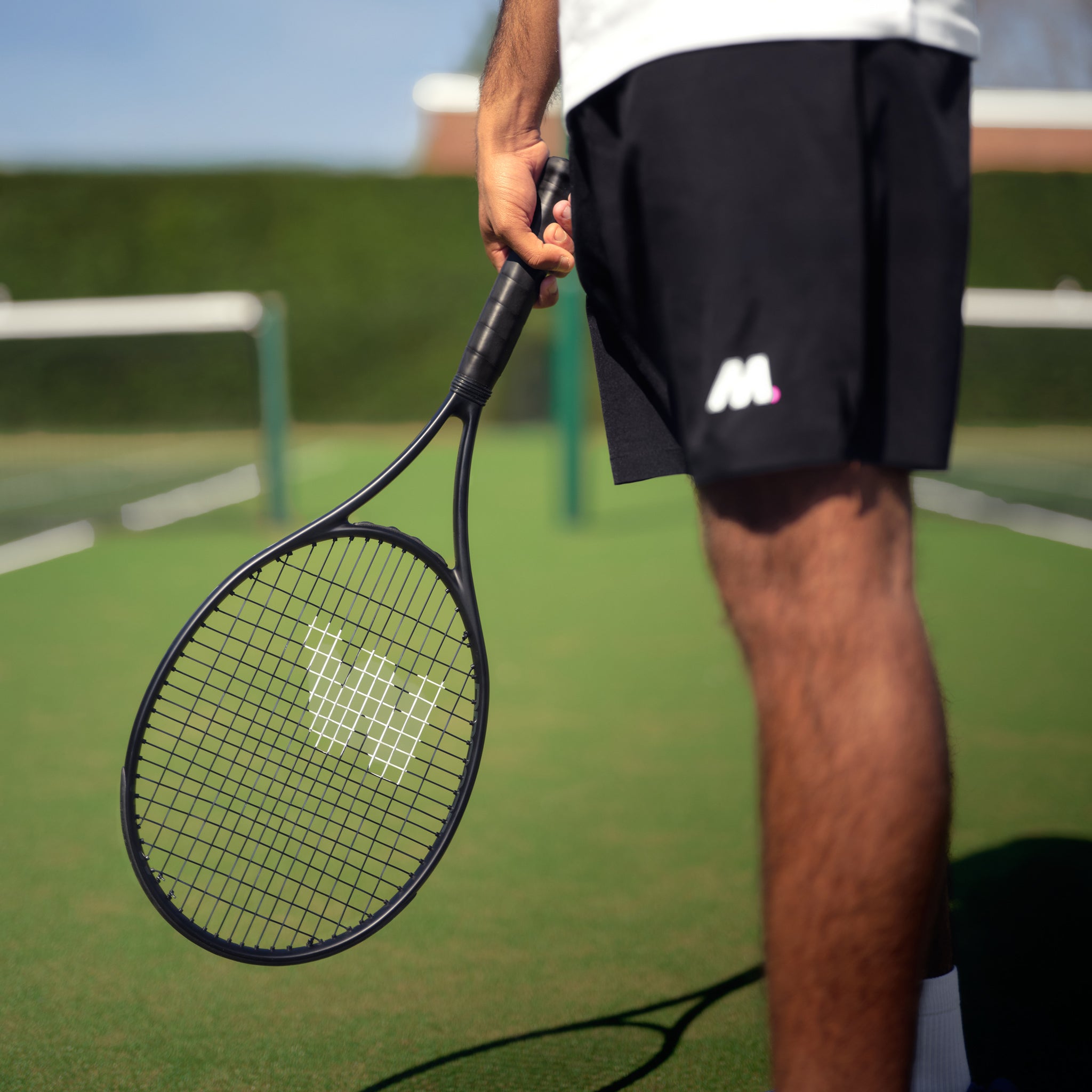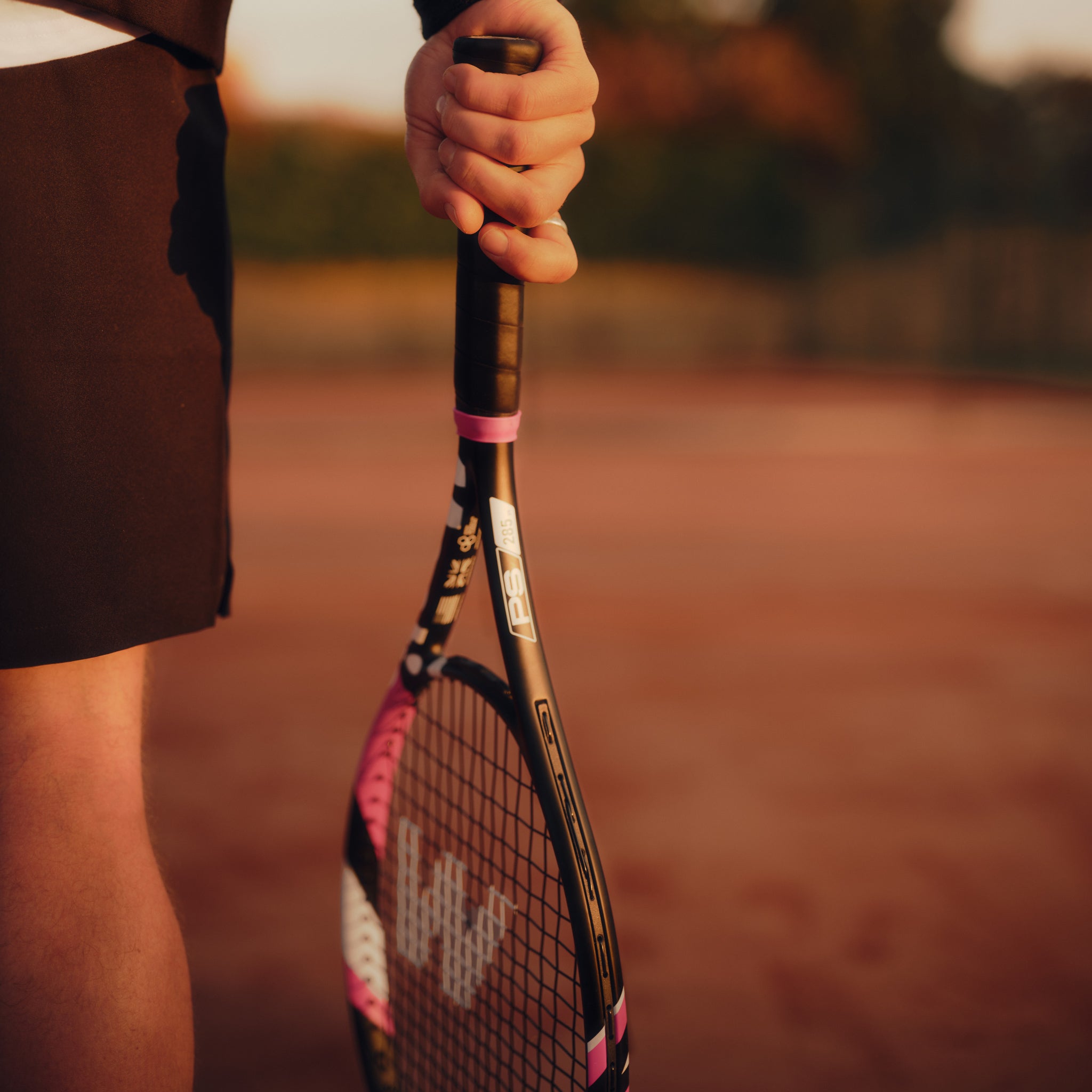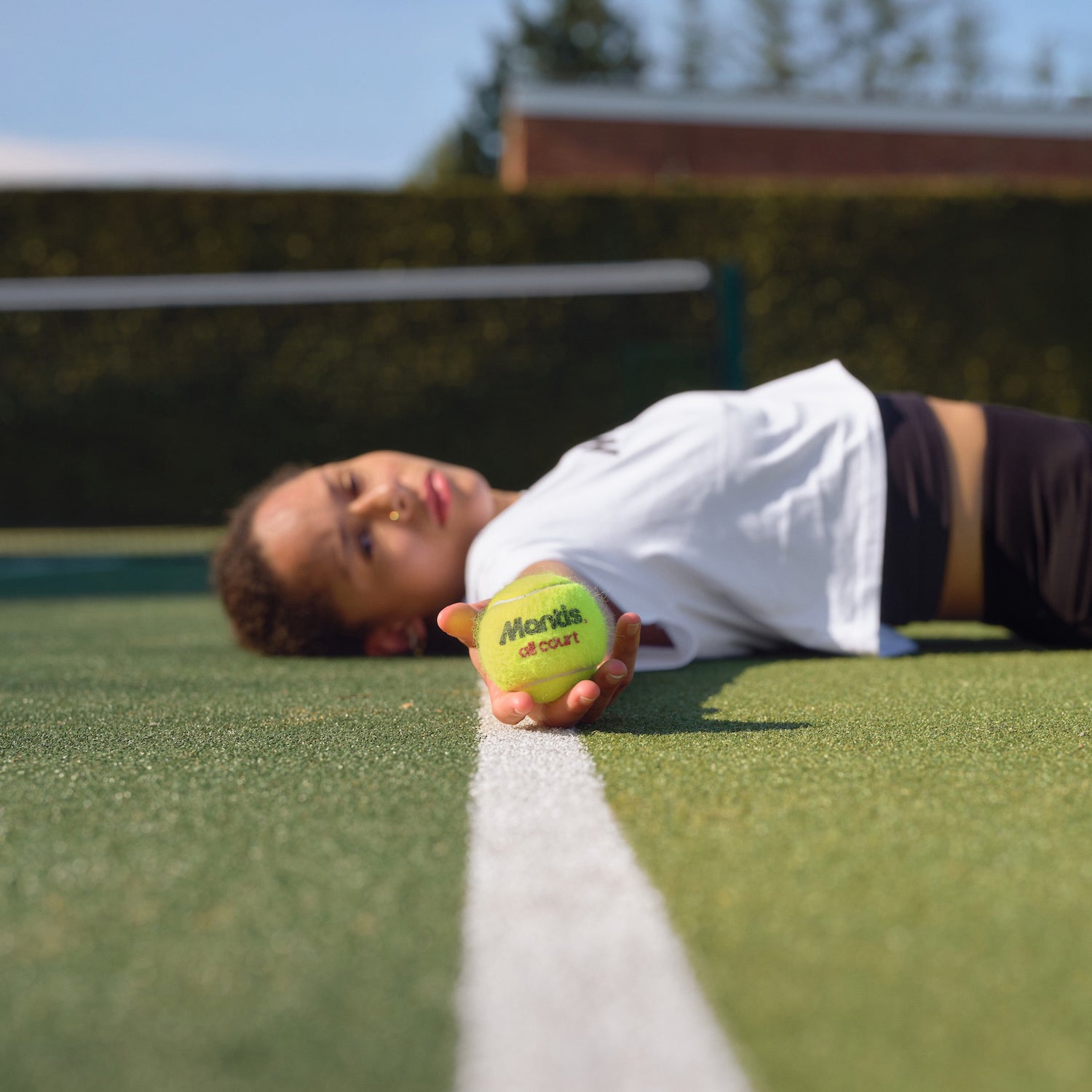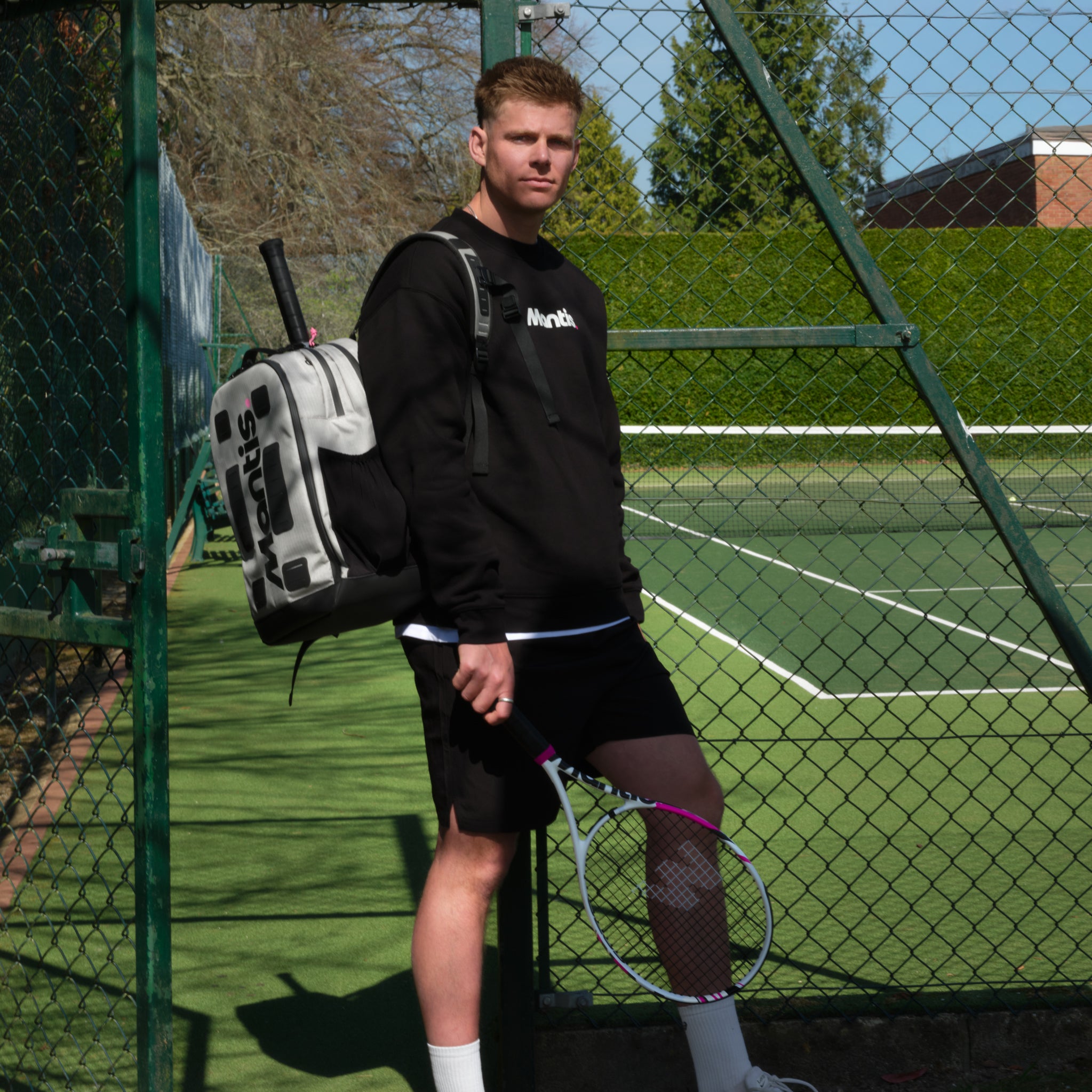
Getting the right junior tennis racket is a big deal. At Mantis, we’ve always believed the most reliable way to pick one is by matching the racket length to the child's height, not just their age. Following a proper junior tennis racket size chart helps a young player build good habits and, most importantly, have fun from their very first hit, and you can learn more by understanding tennis racket specifications.
The Definitive Junior Tennis Racket Size Chart
This visual guide shows the progression of racket sizes, making it easy to see how a few inches can make a huge difference for a young player.

As you can see, the rackets get bigger in small, manageable steps, which is vital for keeping up with a child's growth spurts. The guidelines used by UK tennis coaches recommend this kind of progressive sizing, where the racket length increases by about two inches for roughly every 10 cm of height a child gains.
To give you a practical example, a child under 100 cm tall typically starts with a 17-inch racket. Once they grow to between 100-110 cm, it's time to move up to a 19-inch model. You can discover more about these sizing guidelines for young players straight from the LTA.
Mantis Junior Racket Sizing Guide by Height
To make things even simpler, here’s a quick-reference table. We’ve laid out the recommended racket lengths based on a player's height, with typical age ranges included as a helpful, but secondary, guide.
| Player Height (cm) | Player Height (inches) | Typical Age Range | Racket Length (inches) | Racket Length (cm) |
|---|---|---|---|---|
| Below 100 cm | Below 39" | 2-4 | 17" | 43 cm |
| 100 - 110 cm | 39" - 43" | 4-5 | 19" | 48 cm |
| 110 - 120 cm | 43" - 47" | 6-8 | 21" | 53 cm |
| 120 - 130 cm | 47" - 51" | 8-9 | 23" | 58 cm |
| 130 - 140 cm | 51" - 55" | 9-10 | 25" | 63 cm |
| 140 - 150 cm | 55" - 59" | 10-12 | 26" | 66 cm |
This table is the perfect tool for checking you're on the right track. Remember, a racket that’s too big can be unwieldy and lead to poor technique, while one that’s too small will limit their power and reach. Finding that sweet spot is key.
How to Properly Verify the Racket Fit
So, you’ve used our junior tennis racket size chart and have a racket in hand. The final step—and one we at Mantis always recommend—is a quick physical check to be absolutely sure it’s the perfect match.
This simple ‘standing test’ is a trusted technique used by coaches everywhere to confirm the racket length is just right. It’s an on-the-spot check that helps prevent those common sizing mistakes that can really hold back a young player's development.
Here’s how to do it: ask the child to stand up straight and place the racket head-down on the ground, right next to their foot.
Now, have them relax their arm and let their hand fall naturally onto the handle. Their palm should rest comfortably right on the butt cap (that’s the very bottom of the handle). If their hand lands there without any effort, you’ve nailed the fit.
If they have to bend their arm to reach it, the racket is too long. And if their hand falls well above the butt cap, it’s a sign the racket is too short. It’s that simple.
Understanding Junior Racket Composition
It’s a common mistake to think of junior rackets as just smaller versions of adult ones. In reality, they’re specially engineered tools designed to help a young player develop their game, and at Mantis, we've built our junior range to support every one of those developmental stages.
For the youngest players just starting out, the frames are often made from a durable yet affordable aluminium. This makes sense—it’s tough enough to withstand the knocks and scrapes that come with learning the ropes.
As a player grows in strength and refines their technique, they can move up to rackets that feature graphite composites. These more advanced materials give a much better feel for the ball and add a bit of power, helping to bridge the gap before they’re ready for a full-sized adult frame.
Here in the UK, you’ll find junior rackets in lengths ranging from 53 to 66 cm (21 to 26 inches). This graduated sizing is crucial. It allows a young player to master control and build confidence with a frame they can handle, rather than struggling with a racket that’s too heavy or long. You can discover more about racket equipment specifications) to see how these details cater to players of all levels.
Why Racket Head Size and Weight Matter
While getting the length right is the first step, we can't overstate how much a racket's head size and weight influence a young player's journey on the court. It's a balancing act that directly impacts their development and enjoyment of the game.
For kids just starting out, a larger head size is a game-changer. It creates a bigger 'sweet spot', which is much more forgiving as they’re still mastering hand-eye coordination. Think of it as a friendly helping hand. On the flip side, more seasoned juniors who already have solid technique often benefit from a smaller head, which gives them the precision and feel needed for advanced shots.
If you want to get into the nitty-gritty of these specs, our guide on understanding tennis racket specifications is a great place to start.
It’s this kind of thinking that goes into every Mantis junior racket. Weight is another massive piece of the puzzle, affecting everything from how fast a child can swing to how stable the racket feels when it makes contact with the ball.
Lighter rackets are absolutely crucial for juniors. They help prevent the kind of arm fatigue that can lead to bad habits or, worse, injury. More importantly, a lighter frame allows them to develop proper, fluid swing mechanics from the very beginning, setting them up for long-term success. It’s all about empowering you to choose a racket that truly supports your child's ability and how they play right now.
How to Find the Correct Junior Grip Size
Choosing the right racket length from a size chart is one thing, but getting the grip size right is just as crucial for your child's control and long-term health on the court. It’s a detail that often gets missed, but at Mantis, we make sure parents know how important it is.
A grip that’s too big will stop their wrist from moving freely, hindering proper form. On the flip side, a grip that's too small forces them to squeeze too hard, which can lead to strain and even injury. To get it right, we recommend two incredibly simple methods you can do anywhere: the finger test and the ruler test. For a really deep dive, you can check out our complete guide on how to choose your tennis racket grip size.
Key Insight: Taking a moment for these quick checks helps ensure the racket feels like a natural extension of your child's arm. That's the secret to developing good technique, playing comfortably, and building confidence right from their very first swing.
Got Questions About Junior Rackets?
As experts in the game, we get a lot of questions from parents and coaches trying to figure out the right gear for young players. It can be a confusing process, and everyone wants to get it right.
We've gathered all the most common questions we hear—from decoding a junior tennis racket size chart to knowing exactly when it's time for an upgrade. Think of this as your go-to guide for clear, straightforward advice.








